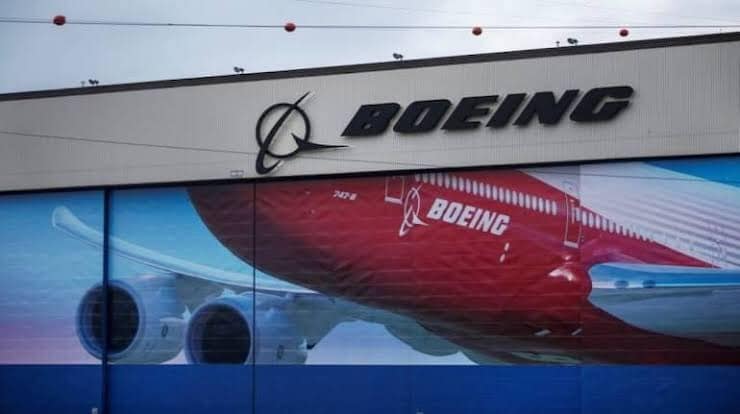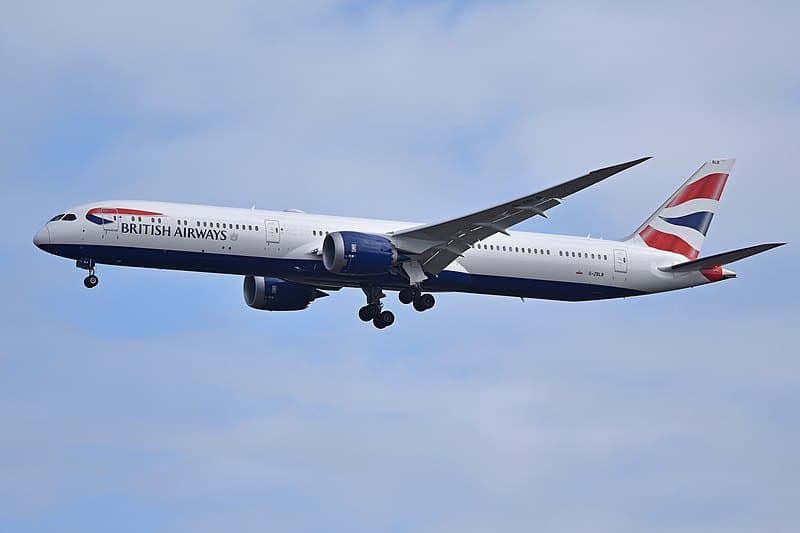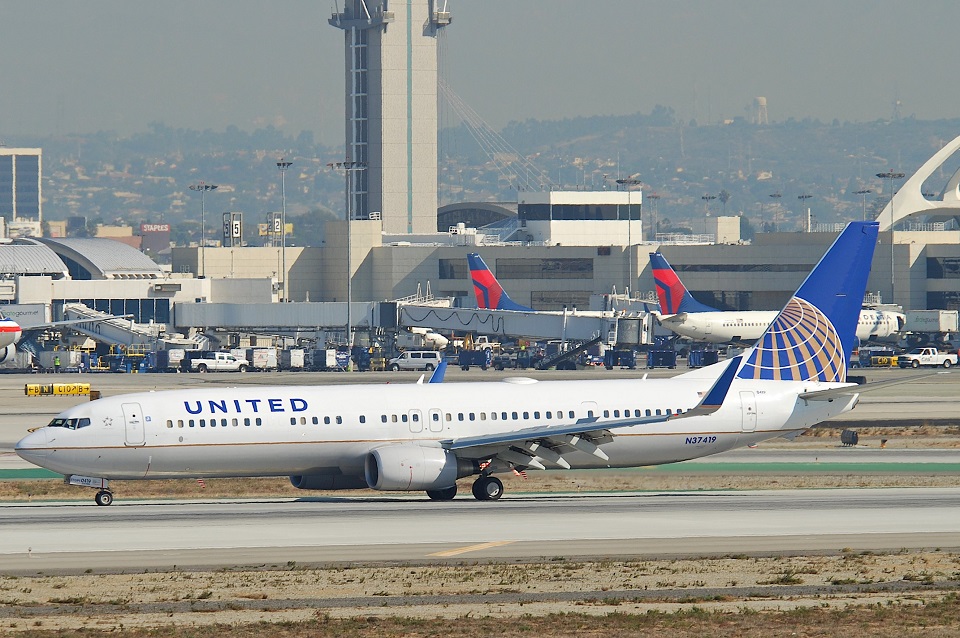Aviation
Boeing lost $2.4 billion in three months and to end 747 production and warns of job cuts

CHICAGO, July 29, 2020 /PRNewswire/ —
- Financial results continue to be significantly impacted by COVID-19 and the 737 MAX grounding
- Revenue of $11.8 billion, GAAP loss per share of ($4.20) and core (non-GAAP)* loss per share of ($4.79)
- Operating cash flow of ($5.3) billion; cash and marketable securities of $32.4 billion
- Total backlog of $409 billion, including more than 4,500 commercial airplanes
The Boeing Company [NYSE: BA] reported second-quarter revenue of $11.8 billion, GAAP loss per share of ($4.20) and core loss per share (non-GAAP)* of ($4.79), primarily reflecting the impacts of COVID-19 and the 737 MAX grounding (Table 1). Boeing recorded operating cash flow of ($5.3) billion.
“We remained focused on the health of our employees and communities while proactively taking action to navigate the unprecedented commercial market impacts from the COVID-19 pandemic,” said Boeing President and Chief Executive Officer Dave Calhoun. “We’re working closely with our customers, suppliers and global partners to manage the challenges to our industry, bridge to recovery and rebuild to be stronger on the other side.”
In the second quarter, Boeing restarted production operations across key sites following temporary pauses to protect its workforce and introduce rigorous new health and safety procedures. Despite the challenges, Boeing continued to deliver across key commercial, defense, space and services programs. The company also resumed early stages of production on the 737 program with a focus on safety, quality and operational excellence. Following the lead of global regulators, Boeing made steady progress toward the safe return to service of the 737, including completion of FAA certification flight tests.
To align to the sharp reduction in commercial market demand in light of COVID-19, the company is taking several actions including further adjusting commercial airplane production rates and reducing employment levels.
“The diversity of our balanced portfolio and our government services, defense and space programs provide some critical stability for us in the near-term as we take tough but necessary steps to adapt for new market realities,” Calhoun said. “We are taking the right action to ensure we’re well positioned for the future by strengthening our culture, improving transparency, rebuilding trust and transforming our business to become a better, more sustainable Boeing. Air travel has always proven to be resilient – and so has Boeing.”
Operating cash flow was ($5.3) billion in the quarter, primarily reflecting lower commercial deliveries and services volume due to COVID-19 and the 737 MAX grounding, as well as timing of receipts and expenditures
Cash and investments in marketable securities increased to $32.4 billion, compared to $15.5 billion at the beginning of the quarter, driven by the issuance of new debt (Table 3). Debt was $61.4 billion, up from $38.9 billion at the beginning of the quarter due to the issuance of new debt, partially offset by repayment of maturing debt.
Total company backlog at quarter-end was $409 billion.
Commercial Airplanes second-quarter revenue and operating margin decreased reflecting lower delivery volume, partially offset by a lower 737 MAX customer consideration charge of $551 million in the quarter compared to a $5.6 billion charge in the same period last year. Second-quarter operating margin was also negatively impacted by $712 million of abnormal production costs related to the 737 program, $468 million of severance expense and $133 million of abnormal production costs from the temporary suspension of operations in response to COVID-19.
The 737 program resumed early stages of production in May and expects to continue to produce at low rates for the remainder of 2020. The COVID-19 pandemic has significantly impacted air travel and reduced near-term demand, resulting in lower production and delivery rate assumptions. Commercial Airplanes expects to gradually increase the 737 production rate to 31 per month by the beginning of 2022, with further gradual increases to correspond with market demand. Estimated potential concessions and other considerations to customers related to the 737 MAX grounding increased by $551 million in the quarter. There was no material change to estimated abnormal production costs.
Commercial Airplanes has further updated its production rate assumptions this quarter to reflect impacts of COVID-19 on its demand outlook, and will continue to assess them on an ongoing basis. The 787 production rate will be reduced to 6 per month in 2021. The 777/777X combined production rate will be gradually reduced to 2 per month in 2021, with 777X first delivery targeted for 2022. At this time, production rate assumptions have not changed on the 767 and 747 programs.
Commercial Airplanes delivered 20 airplanes during the quarter, and backlog included over 4,500 airplanes valued at $326 billion.

Aviation
Air India’s B747 Makes Its Final Journey, Waving Farewell to Fans

In a poignant moment marking the end of an era in aviation history, Air India’s iconic Boeing 747 aircraft, affectionately known as the ‘Queen of the Skies,’ embarked on its ultimate journey from Mumbai’s international airport.
The departure, bound for Plainfield, USA, where it will undergo dismantling and part-stripping under the ownership of American AerSale, signals the closure of a storied chapter for the airline.
Once revered for transporting dignitaries ranging from prime ministers to presidents, the Boeing 747 has etched itself into aviation lore. Yet, as airlines worldwide pivot towards more contemporary and cost-effective aircraft, Air India’s decision to bid farewell to its remaining Boeing 747s reflects the pragmatic realities of today’s aviation landscape.
The sale of these majestic planes to AerSale represents a strategic move by Tata Group, Air India’s new custodian, towards optimizing operational efficiency and embracing modern industry standards. Out of the four aircraft sold, two will be repurposed into freighters, while the remaining pair will be meticulously disassembled to salvage valuable components.
The final flight from Mumbai witnessed a touching tribute as pilots performed a traditional ‘Wing Wave,’ symbolizing the conclusion of the Boeing 747‘s distinguished service with Air India. This poignant gesture encapsulates the deep sentiment attached to the aircraft’s departure and its significant contribution to the airline’s legacy.
As the Boeing 747 embarks on its journey to Plainfield, USA, nostalgia permeates the air, evoking memories of its maiden flight on March 22, 1971. Over five decades, Air India operated a total of 25 Boeing 747s, each leaving an indelible mark on the annals of aviation history.
Middle East
British Airways Resumes Daily Flights to Abu Dhabi, After 4-Year hiatus

British Airways made its way back to Abu Dhabi, landing at Zayed International Airport. Following a four-year break in service, both crew and passengers were greeted with enthusiasm.
In the summer of 2024, British Airways plans to launch a daily route, utilising a Boeing 787-9, from London Heathrow to Abu Dhabi. The new route enhances ties between the UAE and the UK and expands vast worldwide network, catering to passengers who may be visiting friends and family or travelling for business.
Arriving in Abu Dhabi at 08.30+1, flight BA073 to Abu Dhabi leaves London Heathrow at 22.25. Departing at 10.10 and landing at London Heathrow at 15.20 is the inbound flight (BA072).
The chief executive officer and managing director of Abu Dhabi Airports, Elena Sorlini, stated: “We are delighted to welcome British Airways to Zayed International Airport. Their daily schedule is expected to improve connectivity and stimulate travel and business.” Visitors may experience the dynamic capital of the United Arab Emirates like never before at our brand-new, award-winning, state-of-the-art terminal, where they will be welcomed with the best kind of Emirati hospitality.”
Flight schedule:
| London Heathrow (LHR) to Zayed International (AUH)All times are local | ||||||
| Season | Flight number | Departing LHR | Arriving AUH | Flight number | Departing AUH | Arriving LHR |
| Summer ‘24 | BA73 | 22:25 | 08:30+1 | BA72 | 10:10 | 15:20 |
| Winter ‘24 | BA73 | 22:25 | 09:30+1 | BA72 | 11:10 | 15:20 |
Aviation
FAA investigation: Passenger seated in Captain’s seat inside cockpit at cruising altitude

A viral video capturing a startling moment aboard a United Airlines charter flight from Denver to Toronto has triggered a federal investigation.
The footage, initially shared on social media by Hensley Meulens, the hitting coach for the Colorado Rockies baseball team, depicts a member of the coaching staff seated in one of the pilot seats while the aircraft was in mid-flight.
In his caption, Meulens expressed gratitude to the captain and first officer for allowing him this unusual experience. The video, filmed by another passenger, reveals the cockpit door open, and at one point, a third passenger briefly enters the flight deck. Alarmingly, during this time, the captain was absent from the cockpit.
Despite the flight being a private charter operated by United Airlines, company and Federal Aviation Administration (FAA) regulations strictly prohibit passengers from entering the cockpit during flight or leaving the flight deck unsecured.
United Airlines swiftly responded, expressing deep concern over the incident. A spokesperson emphasized that the video depicted an unauthorized person in the flight deck at cruising altitude with the autopilot engaged, constituting a clear violation of safety and operational policies.
The FAA confirmed that it is actively investigating the incident, highlighting that unauthorized access to the flight deck during flight is a violation of federal regulations. The agency assured that it is taking the matter seriously and will conduct a thorough examination to ensure compliance with aviation safety standards.




























